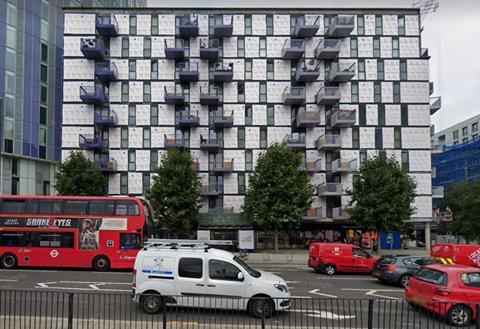New guidance comes as regulator acknowleges it’s “no longer tenable” to demand cover architects cannot get

Regulator the Architects Registration Board has updated its guidance on professional indemnity insurance in recognition of the rising cost of cover and increasing demands for exclusions.
Changes include an acceptance that certain types of claims – including fire-safety and cladding – can be held on an aggregate basis and limited to covering direct losses.
The new guidance also states that it will no-longer be a matter of misconduct if an architect cannot acquire retrospective insurance to cover historic liabilities because of new exclusions applied to their policy. A section sets out architects’ responsibilities to notify clients and the Arb to avoid regulatory action.
Practices have been reporting increasingly unaffordable PII costs in recent years, with the main driver seen as uncertainty related to the building-safety crisis exposed by the Grenfell Tower fire.
In February this year, Yorkshire-based Gagarin Studio – later shortlisted for the 2022 Stephen Lawrence Prize – told BD it was facing an 11-fold hike in the cost of PII cover after several years when a doubling of cost had been the norm.

Rocketing cover costs have also been accompanied by new demands for exclusions on the part of insurance providers, typically seeking to remove cover from work such as cladding, basements and pools, and fire safety.
The Arb’s amended PII guidance does not change the regulator’s fundamental demand that all practices have “adequate insurance arrangements in place” and that no architect should accept a minimum level of cover below £250,000.
Arb chairman Alan Kershaw said the revised guidance reflected the stark realities faced by the profession following the Grenfell disaster, and in light of global market changes.
“It was no longer tenable to require architects to hold insurance they simply could not obtain,” he said.
“Our updated guidance recognises that there are structural issues with the global insurance market that go beyond anything Arb can resolve on its own.
“But the changes we have made mean architects should find it easier to get compliant cover that still provides protection for consumers and the public.”
An Arb survey of more than 300 professionals earlier this year found almost one-quarter of respondents expressing concerns that the current situation in relation to PII was limiting their ability to take on work.
Around one-in-eight respondents said the exclusions included in insurance policies were not manageable.
One-third of respondents said the proposed £250,000 minimum level of cover was too low. Just under one-quarter said it was too high, while precisely one-quarter said there should be no minimum level of cover.
















No comments yet